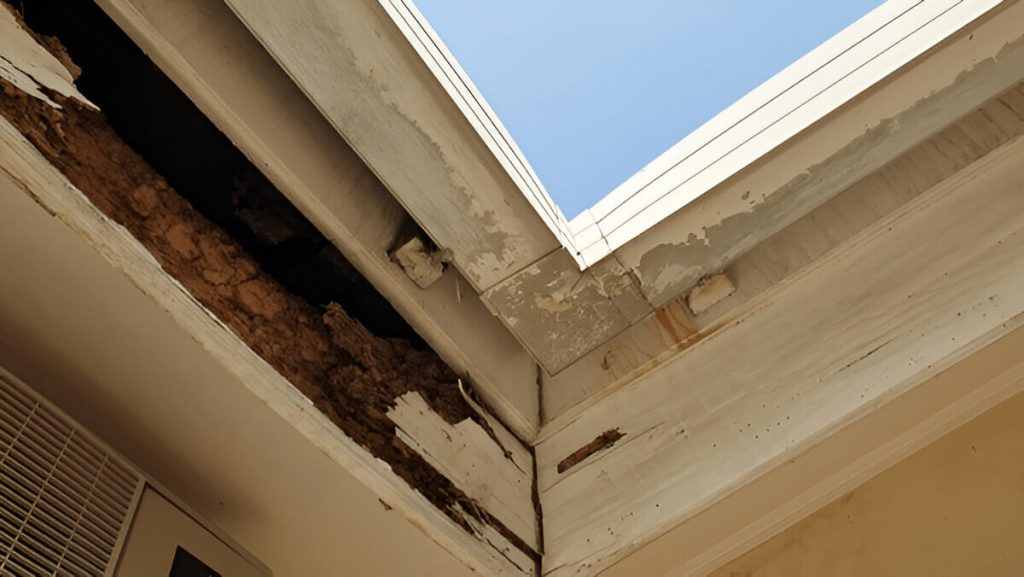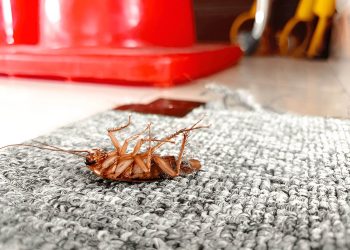Termites are elusive yet destructive pests that can significantly damage structures. This guide provides the knowledge to identify termites accurately, crucial for effective pest control. We explore species like subterranean, drywood, and dampwood termites and their behaviors. We’ll also examine termite anatomy to distinguish them from similar insects like ants. Whether dealing with nymphs or swarming reproductives, this overview offers essential insights into recognizing different termite roles in a colony.
Understanding Termites and Their Impact

Termites are often referred to as “silent destroyers” due to their ability to cause significant damage before being detected. Understanding termite identification is crucial for effective pest control and prevention of structural damage.
Termites are small, usually measuring between 1/8 to 1 inch in length, with soft bodies and straight antennae. Their color can vary from white to light brown, depending on the species and their role within the colony. Winged termites, or alates, are often mistaken for flying ants; however, termites have two pairs of wings that are equal in length and a straight waist.
The appearance of termites can help distinguish them from other pests. For example, subterranean termites typically build mud tubes for protection while traveling between their colony and food sources. These tubes are a telltale sign of an infestation.
Termite damage is often not visible until it becomes severe. They feed on cellulose found in wood and other plant materials, leading to weakened structures that may eventually crumble or collapse if left untreated. Early detection through proper identification can save homeowners from costly repairs.
For effective pest control against termites, understanding what they look like and recognizing signs of their presence is essential. Regular inspections by professionals can help detect infestations early on, ensuring that appropriate measures are taken before significant damage occurs.
An Overview of Termite Species
Termites are fascinating yet often unwelcome guests in many households. Understanding the key differences in appearance among the various types of termites is essential for effective identification and management. The three primary species encountered are subterranean termites, drywood termites, and dampwood termites.
Subterranean termites are perhaps the most notorious due to their widespread presence and significant potential for damage. These insects typically build their colonies underground and require contact with soil to maintain moisture levels. They are generally small, creamy-white to dark brown in color, with a soft body that allows them to move easily through tunnels they create in wood.
In contrast, drywood termites prefer drier conditions and do not need soil contact to thrive. They tend to infest dry wood structures such as furniture or the wooden frames of buildings. Drywood termites can be identified by their larger size compared to subterranean species and their darker coloration, which ranges from light brown to dark reddish-brown.
Dampwood termites, as their name suggests, thrive in moist environments and are commonly found in decaying wood or areas with high humidity levels. These termites are larger than both subterranean and drywood species, often exhibiting a lighter color ranging from pale brown to cream.
Recognizing these differences is crucial for property owners who aim to protect their investments from termite damage effectively. By understanding the distinct characteristics of each type of termite (subterranean’s need for moisture-rich environments, drywood’s independence from soil contact, and dampwood’s preference for wet conditions) homeowners can better identify potential infestations and seek appropriate solutions tailored to each species’ unique habits.
The Anatomy of a Termite
Termites, often mistaken for ants due to their similar size and social behavior, have a distinct anatomy that sets them apart. Understanding the termite body structure is essential for identifying these pests and managing infestations effectively.
A termite’s body is divided into three primary sections: the head, thorax, and abdomen. The head houses powerful mandibles used for chewing wood and other cellulose materials. Unlike ants, termites lack a constricted waist between the thorax and abdomen, giving them a more uniform appearance.
One of the standout features of termites is their wings. Termite wings are typically present in reproductive members of the colony known as alates or swarmers. These wings are long, delicate, and often translucent with a slight sheen. After mating flights, swarmers shed their wings; thus, finding discarded wings near windowsills or doorways can be an early sign of an infestation.
In terms of color, termites vary depending on their caste within the colony. Worker termites are usually pale or creamy white in color. Soldiers tend to have darker heads due to their hardened mandibles used for defense. Alates are generally darker than workers with brownish bodies that help distinguish them during swarming events.
Size-wise, most worker termites measure between 1/8 to 1/4 inch long. However, reproductive alates can be larger due to their extended wingspan necessary for flight.
Nymphs and Workers
In the fascinating world of termites, understanding the roles and appearances of non-reproductive members, such as nymphs and workers, is crucial for anyone interested in termite biology or pest management. Worker termites are integral to the colony’s survival, responsible for tasks like foraging, nest maintenance, and caring for other members. When identifying worker termites, one should note their soft bodies and pale color. Unlike soldiers or reproductive alates, workers lack wings and have a simple appearance with no distinct physical features like large mandibles.
Nymphs in a colony represent the younger generation poised to transition into various roles within the termite hierarchy. These young termites are often mistaken due to their underdeveloped features but can be identified by their slightly larger size compared to workers and small wing buds on their thorax if they are destined to become alates. Recognizing these non-reproductive stages is essential not only for understanding termite ecology but also for effective pest control strategies that target specific colony dynamics without harming beneficial insects in the ecosystem.
Swarmer Termites
Swarmer termites, also known as alates, play a crucial role in the termite colony’s lifecycle. During swarm season, which typically occurs in the spring or early summer, these winged reproductives emerge in large numbers to mate and establish new colonies. Proper swarmer identification is essential for distinguishing them from other winged insects such as flying ants.
One of the key characteristics that help differentiate swarmer termites from flying ants is their wings. Swarmer termites have two pairs of wings that are equal in length and extend well beyond their bodies. These wings are often translucent with a veiny appearance. In contrast, flying ants have two pairs of wings as well, but the front pair is significantly larger than the rear pair.
Another distinguishing feature is the body structure. Swarmer termites have straight antennae and a uniformly thick waist, giving them a more streamlined appearance. Flying ants, however, possess elbowed antennae and a pinched waist that clearly segments their bodies into three distinct parts: head, thorax, and abdomen.
Recognizing these alates characteristics during swarm season can help homeowners take timely action to prevent potential infestations. If you suspect an infestation or need assistance with swarmer identification, it’s advisable to consult with pest control professionals who can offer expert guidance on managing these pests effectively.
The Role of Soldier Termites and How to Identify Them
Soldier termites play a crucial role in the defense and survival of termite colonies. Unlike their worker counterparts, soldier termites are specifically adapted to protect the colony from predators and other threats. One of the most distinguishing features of soldier termites is their large, powerful mandibles, which they use as a primary defense mechanism against intruders. These mandibles are not only formidable weapons but also serve as tools for blocking entry points to the nest.
In terms of appearance, soldier termites can be easily differentiated from worker ants. While worker ants typically have smaller bodies and lack significant defensive features, soldier termites possess larger heads relative to their body size, often with darker coloration that highlights their robust mandibles. This stark contrast in appearance is due to their specialized roles within the colony.
Understanding these differences is essential for identifying and managing termite infestations effectively. By recognizing the unique features and functions of soldier termites within their colonies, homeowners and pest control professionals can better assess potential threats and implement appropriate control measures to protect structures from damage.
Differentiating Between Ants and Termites
When it comes to identifying pests in your home or garden, distinguishing between ants and termites is essential for effective management. Although these insects might appear similar at first glance, several key visual cues can help you tell them apart. Understanding these differences is crucial for implementing the right pest control measures.
One of the primary distinctions in the ant vs termite differences lies in their body structure. Ants have a narrow, pinched waist that gives their bodies a segmented appearance, whereas termites have a more uniform, straight-sided body without such constriction. Additionally, if you take a closer look at their antennae, you’ll notice that ants possess elbowed antennae with a distinct bend. In contrast, termites have straight or slightly curved antennae that resemble tiny strings of beads.
Another important factor to consider is wing structure during swarming seasons when both ants and termites may be seen flying around. Winged ants display two pairs of wings differing in size; the front pair is larger than the hind pair. Termites also have two pairs of wings; however, both pairs are equal in size and length.
Lastly, examining their coloration can provide further insight into identifying these insects correctly. Ants typically range from dark brown to black hues depending on the species, while termites often appear lighter with shades ranging from creamy white to light brown.
By using this ant-like insects comparison guide focusing on body shape, antennae form, wing configuration during swarms, and coloration nuances—homeowners can more accurately identify whether they are dealing with an ant infestation or termite problem and proceed accordingly with targeted solutions.
Why Accurate Identification Matters for Effective Pest Control
Accurate identification is the cornerstone of effective pest control. Understanding precisely which pest you are dealing with is crucial for selecting the most appropriate and efficient treatment methods. Misidentification can lead to ineffective treatments, wasted resources, and even exacerbation of the problem, as different pests require different strategies for management.
For instance, certain insects may look similar but have vastly different behaviors and habitats. Without accurate identification, a treatment plan might target the wrong areas or use inappropriate products, allowing the real culprits to thrive unchecked. Moreover, some pests can develop resistance to specific chemicals if they are used indiscriminately or incorrectly.
In addition to improving efficacy, proper identification helps in minimizing environmental impact. By targeting only the pests that need controlling with precise methods tailored to their biology and behavior, we reduce unnecessary chemical use and promote safer environments for humans and beneficial organisms alike.
Investing time in accurate pest identification not only saves money by preventing repeated treatments but also contributes significantly to sustainable pest management practices. It empowers property owners and pest control professionals alike with the knowledge needed to tackle infestations effectively while preserving ecological balance.


